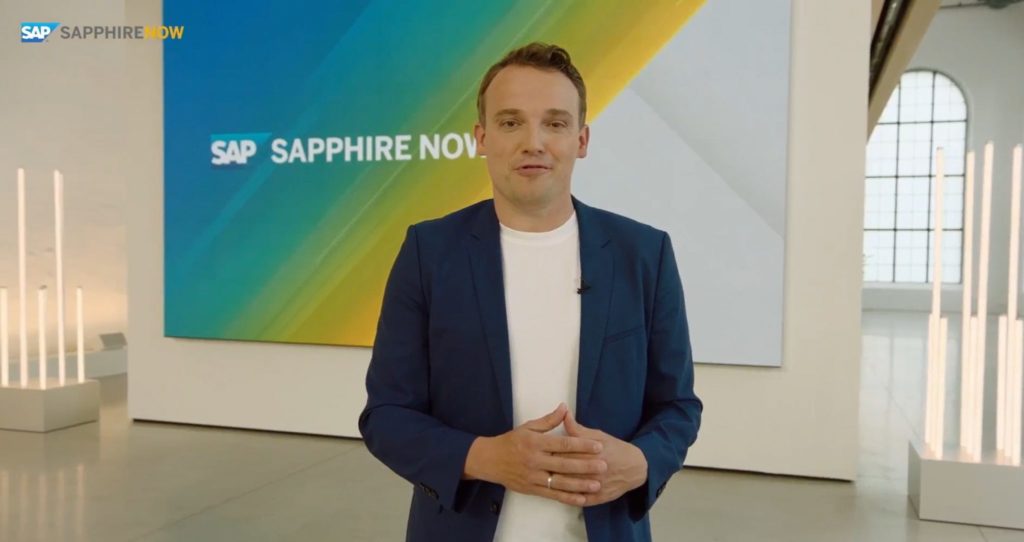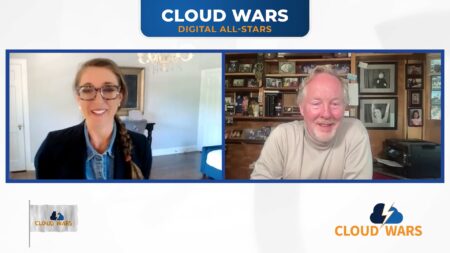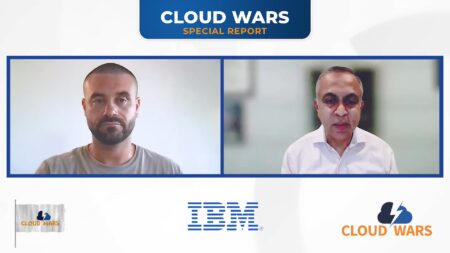If it’s true that the biggest winners in the Cloud Wars are the customers who benefit from all that savage competition, then businesses evaluating SAP and Oracle are grabbing the gold as SAP claims to have whipped its longtime rival for hundreds of Q2 competitive wins.
On my weekly Cloud Wars Top 10 rankings, SAP is #5 and Oracle is #6 as both companies are building deep and wide-ranging momentum in their cloud businesses to complement and soon overshadow decades of on-premises success.
For SAP, its strong Q2 cloud performance is a reflection of some key developments that individually and collectively are giving customers full confidence that SAP will be as successful, capable and innovative in the cloud as it has been since creating the enterprise applications category half a century ago. Here’s a partial list of those key accomplishments:
- strong momentum for its S/4HANA Cloud ERP suite;
- the launch of its Industry Cloud suite of vertical-market solutions;
- the emergence of its Business Technology Platform as a digital-business enabler;
- the launch and rapid growth of the RISE with SAP program to make it easier for customers to select, implement and deploy end-to-end cloud solutions;
- the migration of all of its cloud applications to the same Business Technology Platform;
- sustained high levels of growth across its large portfolio of cloud products; and
- perhaps most significantly of all, the ongoing maturation and confident leadership of CEO Christian Klein.
It was Klein who, quite early in his opening remarks on SAP’s earnings call late last month, confidently counterpunched at Oracle by claiming that SAP had scored hundreds of competitive Q2 cloud victories against Larry Ellison’s company. As you may recall, Ellison has been brutal in comments over the past 12-18 months about what Ellison has portrayed as SAP’s vulnerabilities in shifting to the cloud.
But on the recent SAP earnings call, Klein became the aggressor and offered some compelling context to support his contention that SAP is building substantial momentum in the market with much more to come.
“Let me now cover the impact of RISE with SAP on our line of business and industry applications,” Klein said near the top of his opening remarks on the earnings call.
“With the move of our RISE customers to our next-generation Business Technology Platform, we enable them to run end-to-end business processes based on our LOB and industry applications. This opens up tremendous cross-sell opportunities across our entire cloud portfolio.
“As a result, the latest analyst research”—Klein did not specify the research firm—“confirms that SAP increased its market share in the cloud over our competition. This quarter alone, we have again proven SAP’s unique position, winning in over 350 competitive deals, the majority of which were against Oracle” (emphasis added).
As an example, Klein cited French cosmetics and skin-care company Clarins, which he said is among the “many companies looking to our human-experience management solutions as they navigate a new normal in the workplace. Clarins selected our full HXM suite, including Employee Essential. And we won against Oracle and Workday to transform their HR function and better support their more than 8,000 employees.”
Klein went on to spell out a number of strategic points the buttress his belief that SAP’s best days are ahead of it:
“we have raised our guidance today to reflect the momentum we are seeing in the market”’
“In addition to the progress in our core business, we are investing in new markets and this will expand our total addressable market by $150 billion to a total TAM of $600 billion by 2025”;
the SAP Business Network is “the world’s largest and most comprehensive business network” and “provides a powerful way for members to respond in real time to disruptions in their supply chain. This quarter alone, over 350,000 new trading partners have joined”; and
“We are building solutions that allow customers to consider sustainability right from the design of a product.”
As a result, Klein said, SAP is optimistic about reaching its goal of $26 billion in cloud revenue by 2025, driven by annual organic cloud growth of 22%.
And if Klein wants to reach those ambitious goals, no doubt SAP will need to continue to rack up hundreds of competitive wins against Larry Ellison and Oracle each and every quarter.
RECOMMENDED READING
10 Top Microsoft Numbers from Q4 Blowout
Microsoft Thumps Amazon by 31% in Q2 Cloud Revenue; Bigger than AWS + Google Cloud
Google Cloud Takes on AWS, Microsoft, Oracle, Snowflake in Databases: 5 Keys to Its Success
Microsoft CEO Nadella Puts Bullseye on SAP, Oracle and Salesforce
Google Becomes World’s Hottest Cloud Vendor with Q2 Blowout
IBM Jumps Salesforce to Join Microsoft, Amazon in Cloud Revenue Top 3
How Google Cloud Is Deutsche Bank’s Innovation Engine: 15 Examples
Disclosure: At the time of this writing, SAP and Oracle were among the many clients of Cloud Wars Media LLC and/or Evans Strategic Communications LLC.
Subscribe to the Industry Cloud Newsletter, a free biweekly update on the booming demand from business leaders for industry-specific cloud applications.










